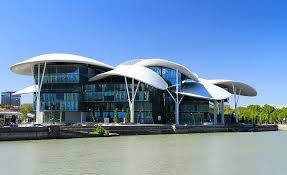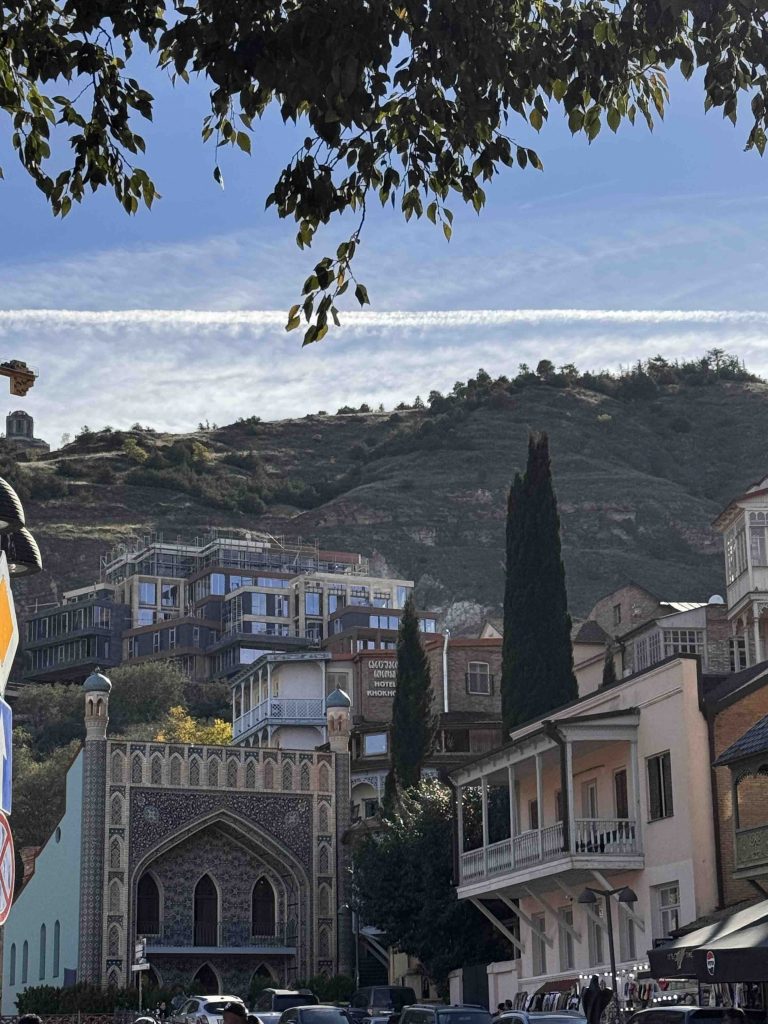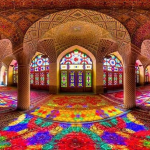If you have visited Tbilisi in the mid to late 2010’s and onwards, you may have asked yourself, why are there so many glass buildings in Tbilisi? Tbilisi is home to many different architectural styles – Soviet Brutalism, Modernism, Constructivism, Stalinism and so on – the city is really shaped by its emotional and diverse history. Amongst the old Soviet gems and daring new modern skyscrapers, sits a genre of architecture that seems to stick out rather than fit in.
These are mostly government buildings – and it is not purely aesthetics. There is deep symbolism in the decision that is aimed at shaping the future of Georgia.
Table of Contents

The Symbolism Behind The Glass Buildings In Tbilisi
The symbolism behind the glass buildings is to create transparency. Transparency between the government and Georgians – who have not always been trustful of the government, often for good reason.
In the early 2000s, Georgia set out to completely overturn the culture of corruption that had become normal throughout the 1990s. Back then, everyday life involved bribes — from getting a passport to dealing with the police — and most public services were slow, inefficient, or simply didn’t work unless money changed hands. When a new, reform-minded government came in, it realised that the only way to fix the system was to rebuild it almost from scratch.
One of the biggest moves was firing and replacing huge parts of the police force, which had earned a reputation for taking bribes. Overnight, traffic police were dismissed and re-hired under strict new rules and better salaries. The government also modernised public services by creating “one-stop shops,” where citizens could handle documents quickly, transparently, and without shady middlemen. The new buildings — often made of glass — were meant to physically show that the state had nothing to hide.
Digitalisation also played a massive role. By moving processes online and cutting out human intermediaries, opportunities for corruption dropped dramatically. These bold, sometimes controversial reforms didn’t solve everything, but they did break the cycle and helped Georgia rebuild public trust after a decade of dysfunction.
Buildings include the Public Service Hall and Tbilisi Police Headquarters.

The Architects
The Architects were outsourced from Italy. Massimiliano and Doriana Fuksas (from Italian firm Studio Fuksas) designed the Tbilisi Public Service Hall, a big glass-petal-roof building that houses government offices.
Criticism
The glass buildings in Tbilisi are meant to scream transparency, but the reality is a bit more complicated. Sure, the gleaming façades look great from the outside, and the whole “you can see everything, so there’s nothing to hide” message is pretty bold. But critics point out that the transparency is often more symbolic than genuine. Walk past a few of these buildings and you’ll notice the blinds are usually down, the offices are tucked away behind frosted partitions, and the most important rooms are still very much out of sight. It’s transparency… but only from a distance.
There’s also this ongoing tension around how these futuristic glass landmarks actually came to be. A lot of them were pushed through at the very top, part of a big state-led vision to modernise Georgia at warp speed. And while they definitely make a visual statement — you can’t miss them — not everyone in the architecture or urban-planning world is thrilled. Some see them as trophy projects but not always rooted in the city’s real needs or character.

Georgias Diverse Architectural Styles
Georgia’s architecture is a striking mix of old and new. In Tbilisi’s Old Town, carved wooden balconies and brick courtyards showcase traditional Georgian design, while medieval stone towers and monasteries dot rural regions like Svaneti. The Soviet era left its mark with concrete apartment blocks and monumental public buildings, some leaning toward brutalist boldness. Since the 2000s, Georgia has embraced modernism, with sweeping steel-and-glass halls, futuristic police stations, and landmarks like the Bridge of Peace adding a contemporary flair. The result is a cityscape where history and innovation collide, creating a vivid, layered visual story of Georgia’s past and present.
You can see more of Georgias architectural styles on our Complete Caucasus Tour!








